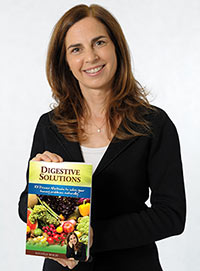Turmeric is a root and looks a bit like ginger but its yellow or orange. It is also known as curcumin. It’s a very powerful anti-inflammatory and will help colic, wind pain, cancer, inflammatory bowel, irritable bowel, especially crohn’s, and colitis, fissures, peptic ulcers, bowel cancer as well as inflammation caused by parasites.
Research has shown that it’s effective for Crohn’s and ulcerative colitis. It also prevents inflammation in the gut lining. Low doses have been shown to be effective for bowel ulceration. in studies. It protects the colon from free radicals which can damage DNA. This is very beneficial as colonic cells turn over every three days. Changes in the DNA can form cancer; turmeric helps to stop this and reduces metastasis. It has an amazing ability to help the liver detoxify toxic chemicals by increasing liver enzymes.
Is a powerful antioxidant and helps other antioxidants (like vitamin A, C and E) work better. It reduces the risk of cell damage and slows down the ageing process. It protects bad cholesterol and it helps lower oestrogen. It also lowers blood sugar.
Ideally you need to use heat and oil to extract the active components of turmeric. You can cook it with vegetables in coconut oil or when you are cooking onions and garlic. The fresh root is higher quality than the powder and three tablespoons of fresh root is equivalent to one tablespoon of powder. Turmeric colours everything yellow so make sure you use stainless steel or glass cookware and wear gloves to prevent staining.
To prevent bowel polyps which are a precursor to cancer, cook with the rind of lemons or limes or onions for their quercetin content. A study of five patients with bowel polyps who were given 480 mg curcumin (the active part of turmeric) plus 20 mg quercetin three times a day for six months were shown to decrease their polyps by 60% in volume and 50% in size. Studies have shown that turmeric clears human cancer cells of bowel polyps and cancer.
Note: As an interesting side note, studies have shown that eating foods with turmeric added can reduce the risk of childhood leukaemia. This cancer has risen by 50% in children under 5 since 1950. Environmental and lifestyle factors are thought to play a major role in this increase.
Tips: Chopped with ginger root it works well as an anti-inflammatory tea. It works well in curries, soups and in rice it adds a bright yellow colour. The root is best kept in the fridge but the powder can be kept in a jar like other herbs. Other anti-inflammatory foods include ginger, garlic and liquorice.





